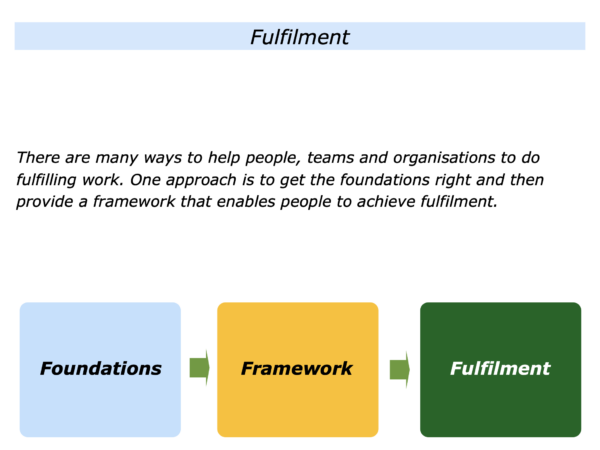
There are many ways to help people to do fulfilling work. One approach is to get the foundations right and then provide a framework that enables people to find fulfilment.
The following section explores how to apply this approach with a team but the ideas can also be used with individuals and organisations.
Imagine that you lead a team. You may start by clarifying the team’s strengths. Bearing these in mind, you may then clarify the specific goals the team may aim to achieve in terms of doing fulfilling work.
The goals you aim to achieve will be different depending on the specific team. You may run a counselling centre, a sports team, a company or another kind of team. If you wish, try tackling the exercise on this theme. This invites you to complete the following sentences.
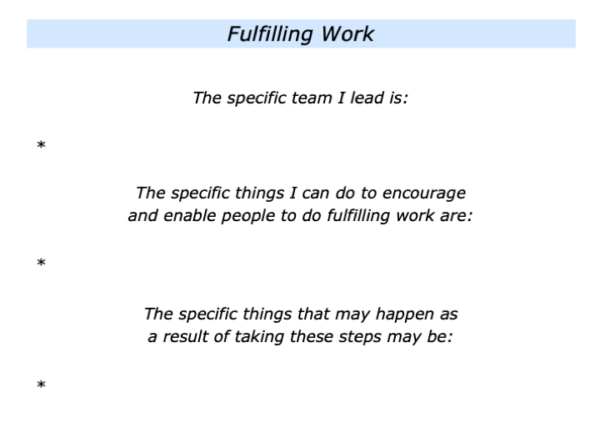
Imagine that you have clarified the team’s aims. You can then go through the following steps to encourage and enable people to do fulfilling work.
Foundations
Great teams start by getting the foundations right. Getting the basics in place can provide the platform for people then adding the brilliance. This often calls for implementing the right strategy with the right people in the right way.
Good leaders create an encouraging environment in which people feel safe. They also give people the support they need to do fine work. People are then more likely to flow rather than be in fear.
Good schools, for example, sometimes find that getting the foundations right calls mirroring Maslow’s hierarchy of human needs. They start by making sure students have a good breakfast. They then create a learning environment that inspires them to want to develop.
Getting the basics right creates the platform for moving on to the next step. This involves providing a framework that enables people to do superb work.
Framework
There are many frameworks for enabling people to do fine work. The following section looks at one approach. This involves aiming:
To communicate the team’s purpose, principles and picture of success;
To encourage people to flow, focus and do fine work.
Good leaders are positive, predictable and enable self-motivated people to achieve peak performance. They sometimes do this providing the following framework.
They give people the big picture and explain the team’s purpose, principles and picture of success.
They explain the professional guidelines that people can follow to achieve the picture of success.
They give people the chance to reflect and decide if they want to contribute towards achieving the picture of success.
Good leaders encourage to people to build on their strengths, set specific goals and do superb work. There are many models for making this happen.
One approach is to create a framework that enables people to flow, focus and do fine work. Let’s explore these steps.
Flow
This involves putting people in the places where they can play to their strengths and do deep work. They are then more likely to be able to flow, focus and do fine work.
Focus
This involves encouraging people to make their best contributions towards achieving specific goals. Imagine that the people in your team say they want to contribute. It can then be useful:
To again describe the purpose, principles and picture of success;
To make clear contracts with each person about their best contributions towards achieving the picture of success;
To manage by outcomes and give people the support they need to do superb work on the way towards achieving the picture of success.
Good leaders recognise that clear contracting is vital to enable people to achieve the goals. Everybody needs to know the team’s goals, the strategy and their parts in working to achieve the picture of success. It is then time to move on to the next stage.
Fine Work
Imagine you have created an environment where people know the team’s goals. You can then encourage them to build on their strengths and perform superb work.
There are many models for taking this step. Let’s look at one approach that increases the chances of them being able to flow, do fine work and finish.
Good leaders recognise their own strengths and limits in terms of enabling people to do fine work. Some visionary leaders therefore employ a coordinator who can orchestrate people’s efforts towards achieving the goals.
Bearing in mind the team’s picture of success, they start by clarifying each person’s strengths. They then work through the following steps to enable people to do good work.
Please note. The following example relates to a small team, but I have seen this approach work successfully across large organisations and multiple teams.
It then calls for having a good coordination team at the centre plus coordinators within each team. They can work together to make sure things get done.
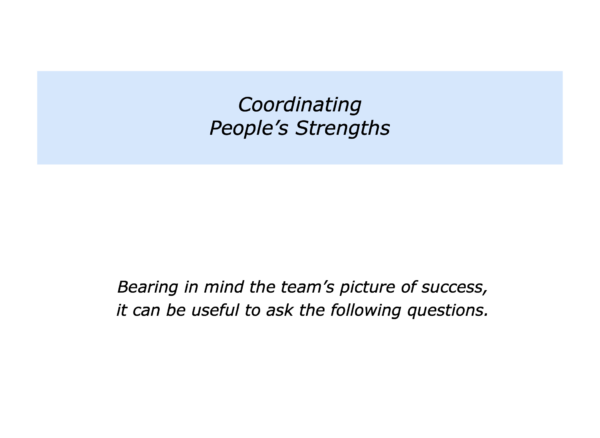
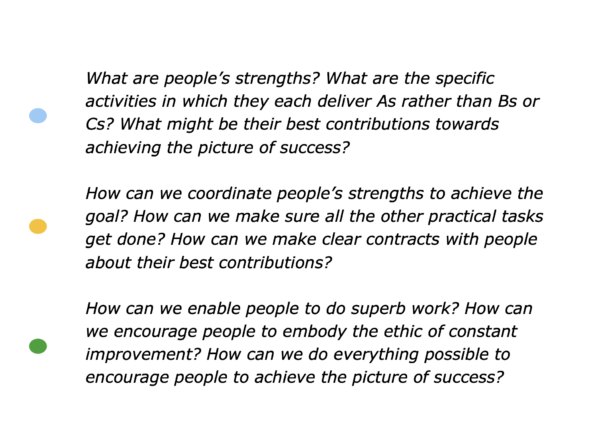
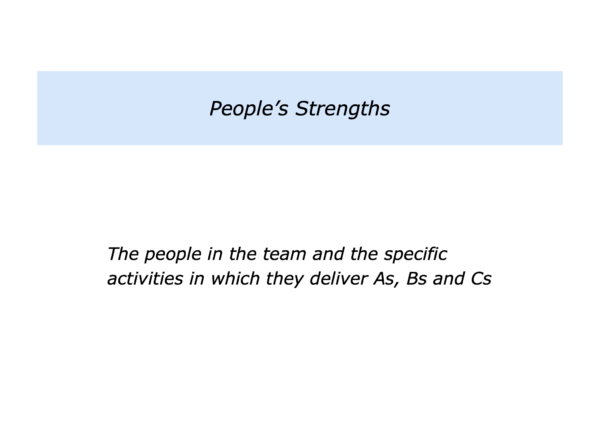
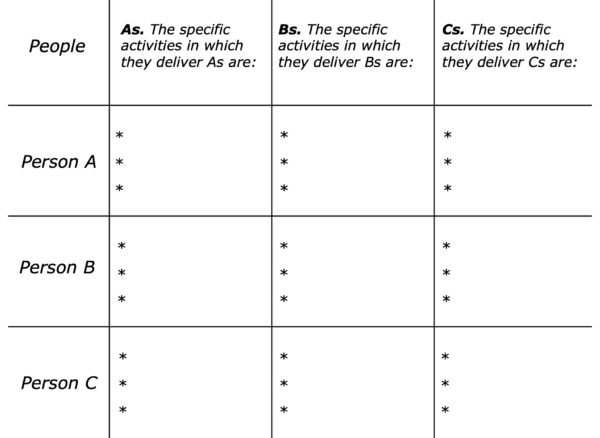
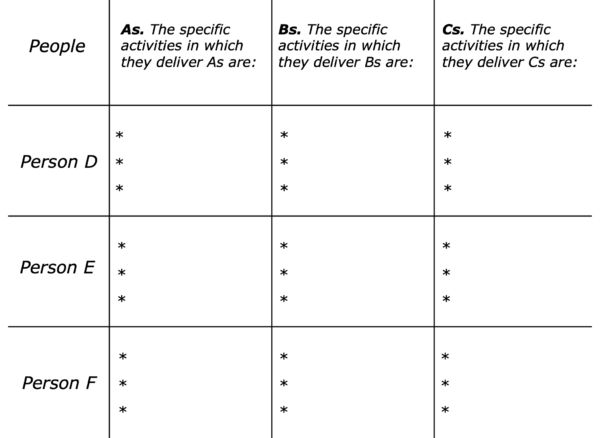
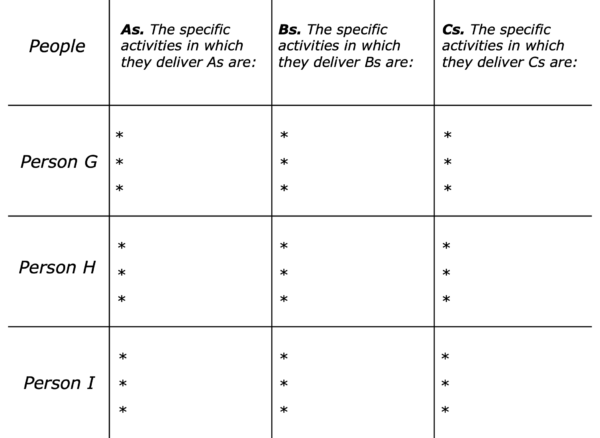
Imagine that you are ensuring the team coordinates its strengths to work towards achieving the goals. You can then encourage them to perform fine work.
There are many ways to take this step. One approach is to keep communicating the team’s purpose, principles and picture of success. It is then to enable people:
To build on their strengths, manage the consequences of any weaknesses and make their best contributions;
To keep following the team’s principles and perform superb work;
To find solutions to challenges and keep working towards the picture of success.
Good leaders keep reminding people of the team’s principles. They also keep people informed about the team’s progress towards achieving the goals. They encourage people to keep focusing on:
The specific things they are doing well and how they can do more of these in the future;
The specific things they can do better in the future and how;
The specific things they can focus on in the next week – or other period – to work towards the picture of success.
Fulfilment
Great teams do their best to achieve their goals. Sometimes this involves them aiming to flow, do fine work and finish.
Imagine that you want to help people to take this step. There are many models you can follow to encourage them to finish successfully. These include the following approaches.
You can encourage the team to
follow its successful pattern for finishing
Everybody has a successful pattern for finishing. The same rule applies to teams. If appropriate, you can encourage people to focus on the following things:
The specific times they have finished successfully in the past;
The specific principles they followed then to finish successfully;
The specific things they can do to follow these principles – plus add other skills – to finish successfully in the future.
You can encourage the team to keep following their
principles and deliver high professional standards
Bill Walsh took this route with his San Francisco team that won three Super Bowls. The 49ers became known for winning games in the last few minutes. Why? Bill explained this to Steve Jamison and Craig Walsh in the following way.
Have you noticed that great players and great companies don’t suddenly start hunching up, grimacing, and trying to ‘hit the ball harder’ at a critical point?
Rather, they are in a mode, a zone in which they’re performing and depending on their ‘game,’ which they’ve mastered over many months and years of intelligently directed hard work.
By focusing strictly on my Standard of Performance, the 49ers were able to play the bigger games very well because it was basically business as usual – no ‘try harder’ mentality was used.
In fact, I believed it was counter-productive. Consequently, the San Francisco 49ers could function under tremendous stress and the forces that work on individuals in competitive situations.
You can encourage people to, when appropriate,
dare to do what may be required to deliver the goods
Good leaders encourage people to keep following the team’s disciplines. There may be times, however, when people need to do something extra to reach the goals.
Such leaders therefore involve their team in practicing how to behave in such situations. It is an approach I have used when working with teams in different fields. Here is one exercise we have used.
Managing Challenging Situations
Start by brainstorming the possible challenge situations they may face in the future. These may include being able to finish successfully. It then involves guiding the team through the following steps.
They can focus on one specific example and clarify the real results they want to achieve in the challenging situation.
They can clarify the principles they want to follow to achieve these results in the challenging situation.
They can practice following these principles and doing their best to achieve these results in the challenging situation.
Great teams encourage people to flow rather than freeze on big occasions. They sometimes do this by reminding people of the following saying.
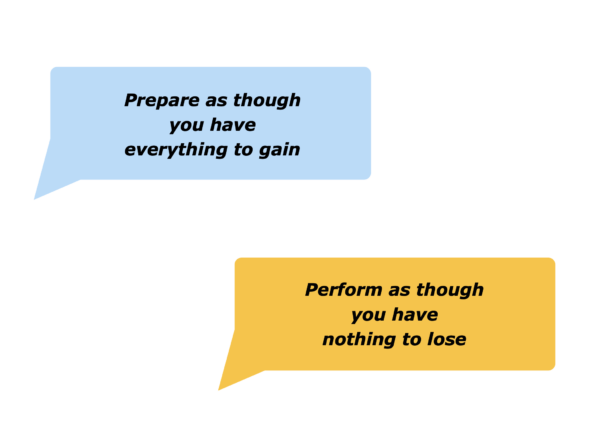
Imagine that your team has done its best and reached its goals. Sometimes, as a by-product, people may gain a sense of fulfilment.
Different people have different philosophies about fulfilment. Some find fulfilment by doing their personal best. They may aim to become the best kind of person, artist, athlete, scientist or whatever they want to be.
Some people gain fulfilment by performing superb work and achieving certain personal or professional goals. They may also, on some occasions, gain recognition or even win prizes.
Some people want to serve something greater than themselves during their time on the planet. They aim to follow their principles, do their personal best and leave a positive legacy. This is more likely to produce a sense of peace.
Imagine you lead a team. You can provide a framework that enables people to reach the desired goals and gain a sense of fulfilment. You will, of course, do this in your own way. If you wish, try tackling the exercise on this theme. This invites you to complete the following sentences.
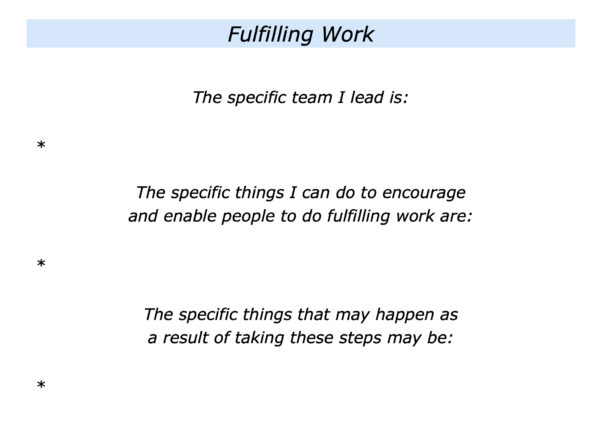






Leave a Reply